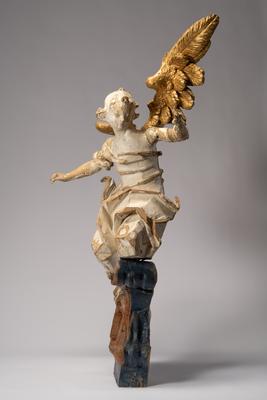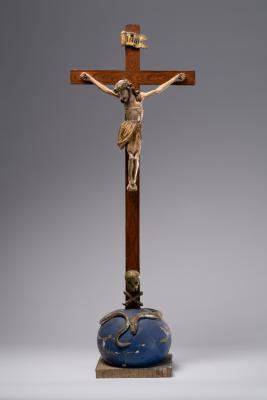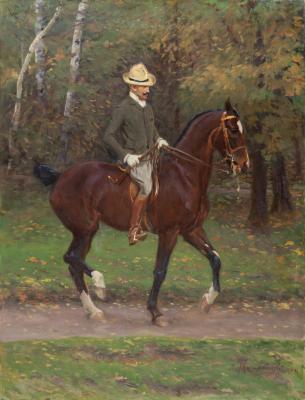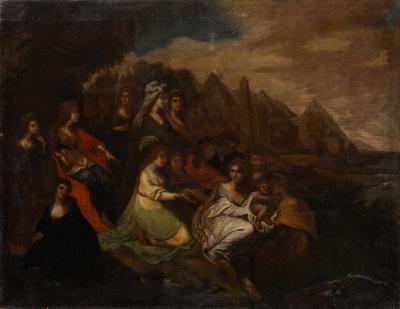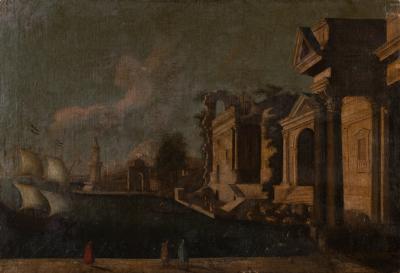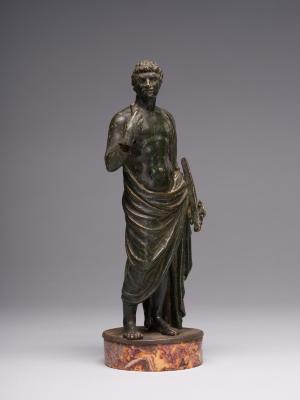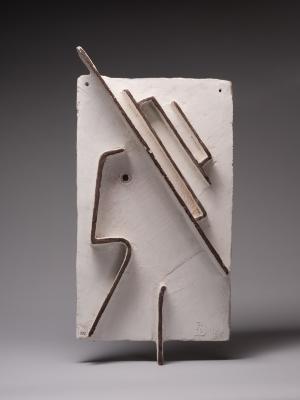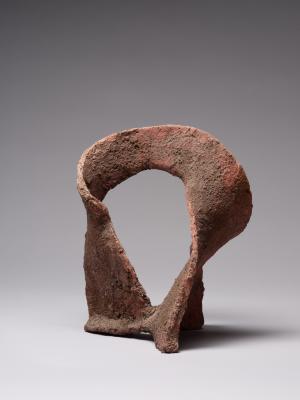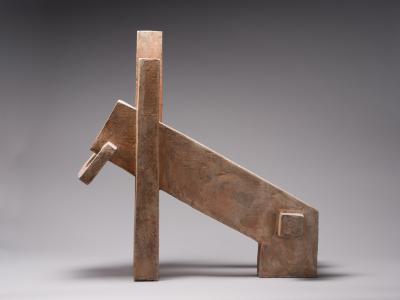A man with a semi-naked torso, wearing a short, dirty-blue robe and knee-length pants. On the top of his head is a kippah-like hat with a bundle of red-pink tow and a braid with a red flower on the back. On the man's right side hangs an elliptical-shaped basket with a lid, and on his neck, forming a ring, hangs a snake, which the man holds by the head with his right hand. In his left hand is a long bamboo stick. The snake and the stick are symbols of beggars in China. The etching comes from the album "Customs and National Costumes of the Chinese", which includes 60 images of Chinese people engaged in various activities. An explanation in German accompanies each image; some are written in French. In the 18th century, artists in Canton (Guangzhou) in southern China created these paintings for Europeans eager to learn more about China and its people.






